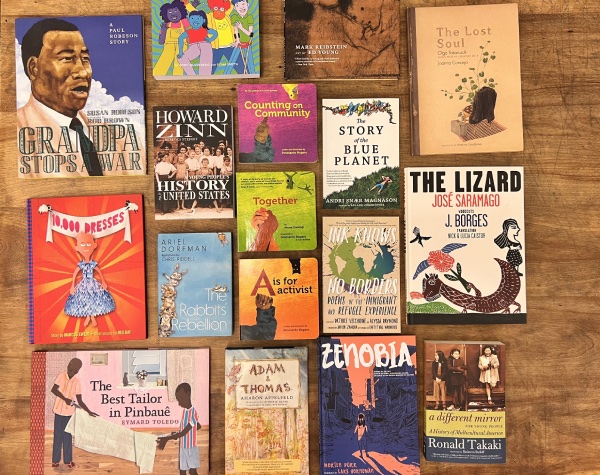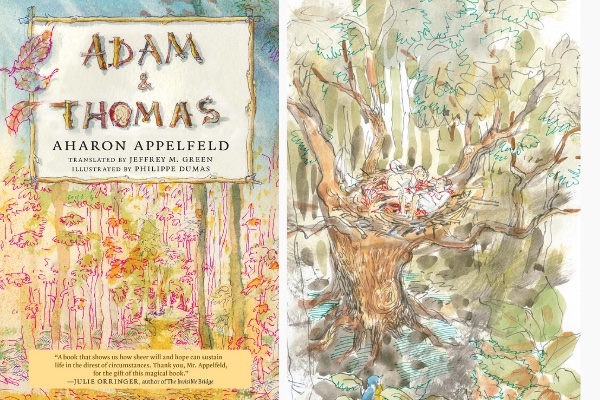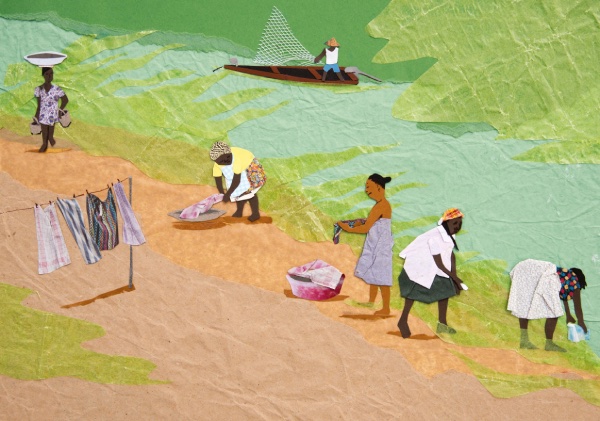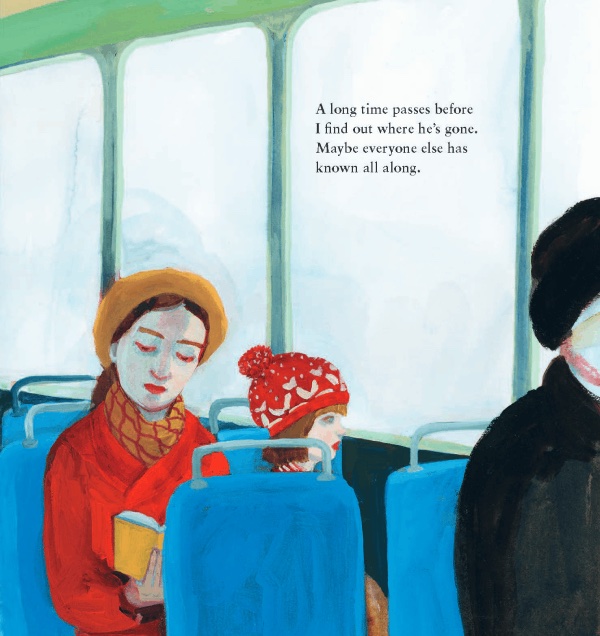In recent years, a proliferation of books in translation for children and young adults has brought imaginative stories from around the world to new readers. We’re speaking with some of the extraordinary publishers who make these books possible about their experience working in this vital field.
For this month’s installment in the series, we spoke with Ruth Weiner, publisher of Triangle Square Books for Young Readers, an imprint of Seven Stories Press.
WWB: Could you tell us about the history of Triangle Square? How did you get started?
Ruth Weiner (RW): In 2007, Seven Stories Press published our first kids’ book, a young people’s edition of Howard Zinn’s classic, radical A People’s History of the United States. We’d been publishing Zinn for years, and we knew there was a lot of interest from teachers in having an adapted edition. So without really knowing what we were doing in the children’s market, we published what became the start of our very successful For Young People series of (mostly) adapted books of award-winning history and science. A year later, we published a picture book by Marcus Ewert, illustrated by Rex Ray, about Bailey, who likes to wear dresses, despite her family insisting that she is a boy. That was pretty radical in 2008, and we got a lot of pushback from conservative circles (and still do). Then in the fall of 2012 we had a list that was full of books for young readers—including a wonderful and fantastical illustrated chapter book from Iceland’s Andri Snær Magnason—so we decided to create a dedicated imprint. Seven Stories’ publisher Dan Simon led the way editorially and came up with the name Triangle Square after the green space just around the corner from our offices in Tribeca. This year is our tenth anniversary!

A selection of Triangle Square books.
WWB: Is there a particular theme, focus, or aesthetic that the children’s books published by Triangle Square share?
RW: Absolutely. We’re an imprint of Seven Stories Press, and like the larger company, we are committed to works of the imagination and high-quality art and illustration. Our books often feature social justice issues, care for the environment, human rights, and a diversity of characters and experiences and abilities. As author Cory Silverberg stresses in his inclusive sex books for kids, they also center truth, respect, power, and justice, and reflect young people’s own experiences. We like to say that we look up to kids—they’re so much smarter and more sensitive than we often give them credit for, and uncomplicated in their sense of what’s fair and right. We hope our books reflect the respect we have for young readers, and, most importantly, that kids find joy in reading them.
WWB: What are you looking for in a children’s story as a publisher and as a reader? Do you think that a good children’s book will always have some appeal for adults as well?
RW: I always take in books as a reader first—I want to know how the book makes me feel, what’s the human reaction, before I consider it as a publishing opportunity. My favorite kids’ books have characters that any reader at any age can relate to because the perspective and the emotion reflected there are true—whether the character is joyous or sad or afraid or curious or feeling silly, or maybe they’re feeling a feeling they can’t yet identify. I always hope to find that moment of emotional recognition and/or to see the character have agency, whether that’s achieved through imaginative writing or expressive illustrations or both, and whether the intended reader is young or old. Answers aren’t always easy to come by in the real world when you’re a kid—sometimes it’s enough to ask a question and feel supported while you work out an answer for yourself. I love books that embrace that ambiguous, uncertain space.
I do think the best kids’ books appeal to adults too. Some kids’ books offer a wink-wink to the adult in whose lap the child may be sitting, which is clever and amusing, but in the end, if the writing is good and the story pulls you in and the illustrations are compelling, what’s not to like?

The cover and an interior page of Adam and Thomas by Aharon Appelfeld, illustrated by Philippe Dumas and translated by Jeffrey M. Green.
WWB: What have been some of the most exciting aspects of the undertaking so far? What, if any, have you found to be the most challenging aspects of publishing children’s literature (as opposed to literature for adults)?
RW: It’s been really gratifying as a longtime publishing person to pivot and spend time with and learn from so many amazing professionals dedicated to children’s literature—the librarians, booksellers, teachers, and parents, the authors and illustrators, and, of course, the kids. We’ve been listening and learning a lot. The last decade of Triangle Square’s growth has paralleled that of my own kids. They’ve been a very patient and quite excellent focus group of three, and I’m grateful to them and all the kids we know who’ve offered their feedback (they’re always honest, if nothing else!).
One of the biggest challenges for us at the outset was getting certain gatekeepers to acknowledge that kids can and want to read about our complicated world. Let the child ask questions if they don’t understand—more often than not, they’ll really engage. One of Triangle Square’s earliest titles, A is for Activist by Innosanto Nagara, began as a grassroots bestseller. Some of the great indie bookstores couldn’t keep it in stock, but other retailers didn’t understand putting words and concepts like “activist” and “abolitionist” in a board book, and they didn’t stock it. It was edgy for sure, but it’s a bestseller now, and most retailers carry it along with the many new activist books for very young readers.
WWB: Are there any underrepresented languages or countries that you’re particularly drawn to, and are there literary traditions in children’s literature from other countries that you’re keen for Triangle Square to share with Anglophone readers?
RW: We’re really interested in books from all over, so there is a lot of potential. We’re always open to new voices and to traditions and experiences from around the world that are less familiar here, but also those universal experiences that every kid will recognize no matter where they are, what their cultural practices are, or what they look like.
We’ve been intrigued to see what is considered appropriate for children in the US versus in other countries. A few years ago, we published under Triangle Square’s banner The Lizard, which is an excerpt from an adult story by José Saramago, illustrated by J. Borges and translated from Portuguese by Nick and Lucia Caistor. It’s metaphorical and imaginative and very mysterious—will a kid get the references? Will an adult? We took a different approach with The Lost Soul by Nobel Prize winner Olga Tokarczuk, illustrated by the hugely talented Joanna Concejo and translated from Polish by Antonia Lloyd-Jones. This was my favorite book of 2021, and while it has been published very successfully around the world for kids, we decided to publish it here for both adults and younger readers. I’m certain the many adults who adore this book are sharing it with their children too. It’s really special. Similarly, in the fall we’ll publish an illustrated poem by Wyslawa Szymborska, Love at First Sight, for adults and children. We love these books that push the boundaries of what a kids’ or an adult book “should” be.
This year, we’re also really excited to launch a series in English that was originated by an editor at Actes Sud Jeunesse. Her vision was to feature people who said no to what they considered unjust and unfair. “They Said No” is a historical fiction series for younger readers about protestors, activists, poets, revolutionaries, and other brave changemakers from around the world, and it emphasizes the importance of standing up for what you know is right. These are books based entirely on fact, and yet by fictionalizing a particular turning point in the person’s life, they humanize and make more accessible the events described. It’s not an approach you often see here in the US, and we hope it’ll find an avid readership. The series launches with two volumes, one on the leader of the Warsaw Ghetto uprising, Mordechai Anielewicz, and the other on the slain Russian journalist Anna Politkovskaya, each with a stunning portrait on the cover by illustrator Francois Roca. Subsequent volumes feature Aimé Césaire, Harvey Milk, George Sand, Victor Jara, Janusz Korczak, Rosa Luxemburg, and many others.

An interior page of The Best Tailor in Pinbauê, written and illustrated by Eymard Toledo.
WWB: Do you think there has been a general upsurge in children’s publishing in recent years? If so, what do you think has brought it about?
RW: Yeah, the numbers bear that out—there are more kids’ books being published now than ever before. Some of it is market-related—corporate America discovering that young adult versus middle grade, etc., are separate markets to publish into. If we just followed market trends, then we’d all be publishing manga right now! But much of the increase, I think, is due to a generational change in how we view kids as young people with agency and deep emotional lives, and the belief that the books they read shouldn’t tell them how to be, but rather should reflect their lived experience. Needless to say, we’re in the latter camp.
Our own little upsurge is due to the success we’re seeing from the imprint, especially from books by Innosanto Nagara, Tim Lockette, NBA for Young People’s Literature–nominee Hal Schrieve, and Cory Silverberg, and our For Young People series, but also from a number of our books by authors known primarily as writers for adults who ventured into storytelling for younger readers. There are wonderfully imaginative and thoughtful books by Swedish novelist Sara Stridsberg, graphic artist Seymour Chwast, Ukrainian Israeli novelist and memoirist Aharon Appelfeld, Dominican writer Julia Alvarez, Chilean essayist and playwright and novelist Ariel Dorfman, Israeli novelist Etgar Keret, and the only kids’ book ever published by Kurt Vonnegut. And we have much more to come. It’s been really fun for us and, I think, the authors, too.
WWB: What is a new or forthcoming title that you are looking forward to sharing with readers?
RW: I can’t pick just one! First, every kid’s bookshelf should have sex ed books by Cory Silverberg and Fiona Smyth. They’re the most inclusive sex ed books available—they’re bright and accessible and put social justice at the center of discussions about bodies and relationships and feelings. The last in the trilogy, You Know, Sex, comes out in April.
I mentioned Sara Stridsberg’s first children’s book, The Summer of Diving, which comes out in June. It’s gorgeously illustrated by Sara Lundberg and translated with great care from the Swedish by B. J. Woodstein. The book shows a child experiencing the absence of a parent who is hospitalized for depression. I love how it centers the child’s experience, which is sometimes sad and sometimes full of mischievousness and play. The book makes no effort to explain why or offer false platitudes that all will be fine. It’s not easy to capture a child’s perspective with such honesty (and, yes, hopefulness!) as Sara and Sara have done.
And we have an amazing, very accessible biography of Socrates by Devra Lehmann that shows the startling relevance of the ancient philosopher today. As you’ll recall, Socrates wanted only to distinguish truth from falsehood, then was killed for corrupting the youth of Athens with his ideas. This is the first in a new series we’re launching, Philosophy for Young People, that continues with Spinoza, St. Augustine, and Hannah Arendt.

An interior page of The Summer of Diving by Sara Stridsberg, translated by B. J. Woodstein and illustrated by Sara Lundberg.
WWB: What’s next for Triangle Square?
RW: We’re growing the list with these two new series, nurturing our current authors, and also finding new voices here and from all over the world. In addition to US-based voices and stories, we’ve published books translated from Portuguese, French, Hebrew, Icelandic, Italian, Persian, Danish, Swedish, and Spanish, and told stories from Brazil, Gaza, Syria, Ukraine, Chile, Indonesia, South Africa, Syria, ancient Greece, and China. We hope to continue offering new perspectives and new experiences for young readers to discover through our books.
Triangle Square Books for Young Readers breathes progressive new life into the world of children’s and YA books through its inclusive imprint, which features such titles as the award-winning 10,000 Dresses by Marcus Ewert and Rex Ray; Innosanto Nagara’s A is for Activist, the runaway hit board book for the children of the ninety-nine percent (in both Spanish and English); Cory Silverberg’s What Makes a Baby? and Sex Is A Funny Word; and our For Young People series, which adapts celebrated nonfiction books for middle-grade readers and to date includes seminal works by Howard Zinn on a people’s history of the US, Charles C. Mann on globalism, Jared Diamond on evolutionary biology, and Ronald Takaki on the history of multiculturalism. Triangle Square books are published in hardcover, paperback, and e-book formats, in English and Spanish, throughout North America and around the world. Triangle Square supports social justice, multicultural literacy, restoration of the environment, kids’ rights, and freedom of the imagination.
© 2022 Ruth Weiner. All rights reserved.
Read more interviews with publishers of children’s literature in translation










